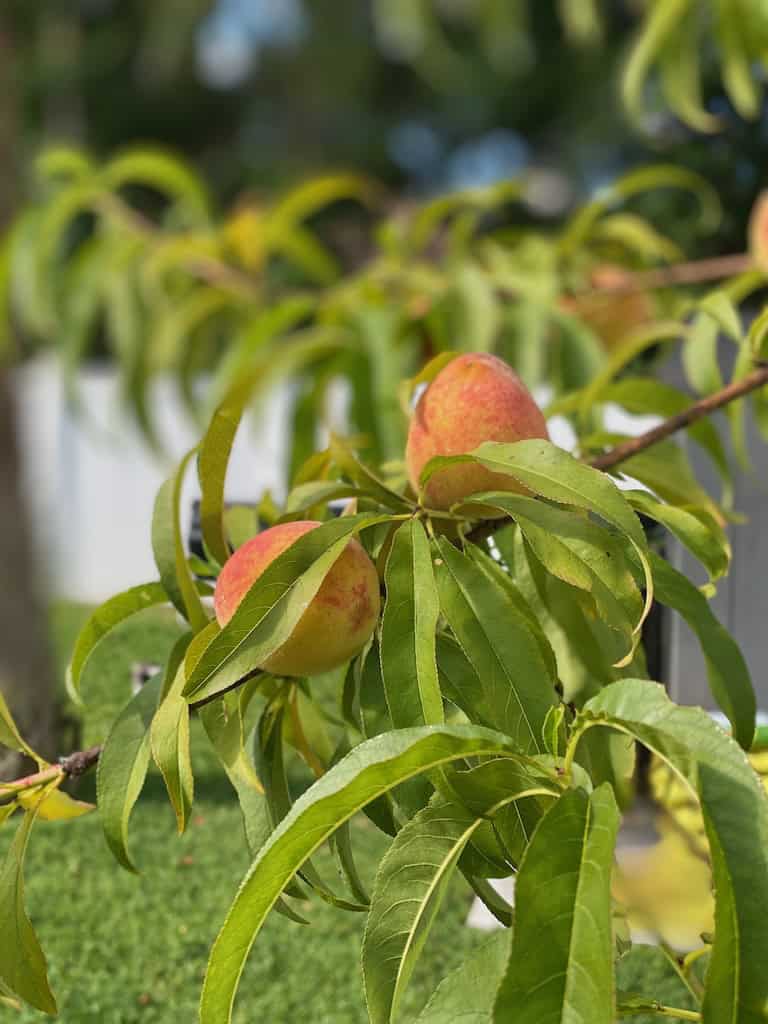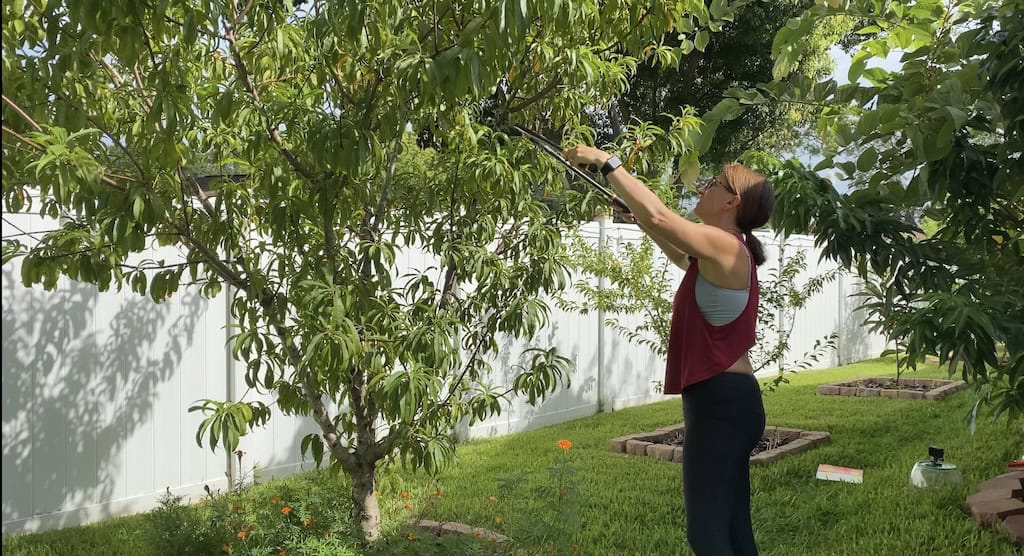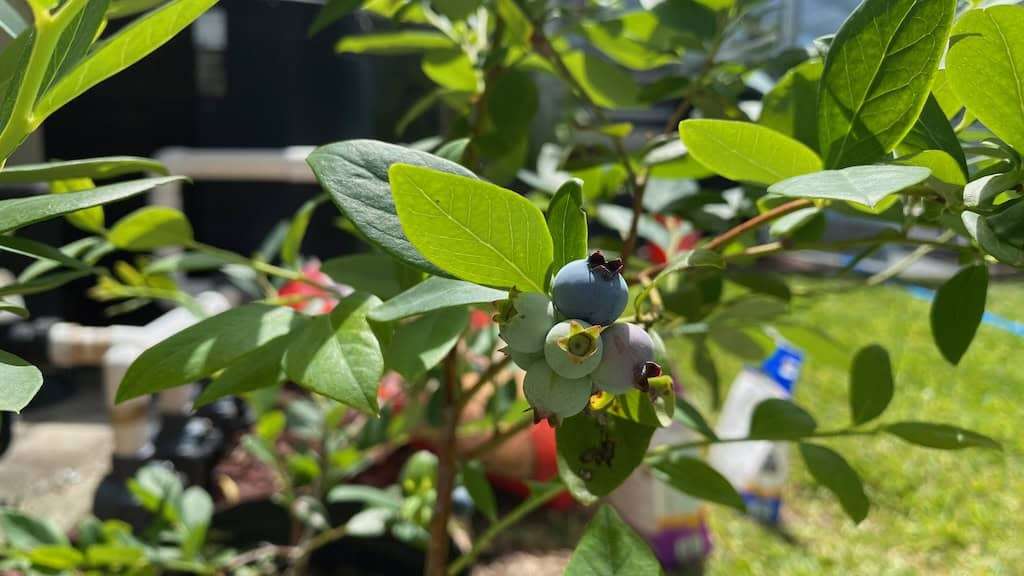Last Updated on February 23, 2025 by Homegrown Florida
If your fruit tree is not producing, don’t get discouraged—it might just need a little help. Fruit trees take time to mature, and even when they reach fruiting age, they won’t produce well if conditions aren’t right. Issues like improper pruning, lack of pollination, or even choosing the wrong variety for your climate can all lead to a disappointing harvest. The good news? Most of these problems are easy to fix. Winter is the perfect time to assess your tree, make necessary cuts, and set it up for a productive season ahead. Let’s go over the top reasons your fruit tree isn’t fruiting and how you can get it back on track.
Table of Contents
1. Your Tree Needs Proper Pruning
One of the biggest mistakes people make with fruit trees is neglecting pruning—or pruning incorrectly. While it might feel counterintuitive to cut back a tree when you want more fruit, pruning is essential for healthy growth and good production.
Tree Shape Matters

Fruit trees grow in different shapes depending on the type. The two main forms are central leader (a single, main trunk with horizontal branches) and vase-shaped (an open center with multiple main branches). Some trees, like apples and pears, do best with a central leader, while others, like peaches and plums, thrive in a vase shape. If your tree’s structure isn’t right, it may struggle to produce fruit.
For example, peach trees should be pruned into a vase shape to allow sunlight and airflow into the center. If they have a strong central leader, fruit production may suffer. I made this mistake with my own peach tree and have been slowly correcting it over the years by cutting back the leader.
Removing Problem Branches
When pruning, look for branches that:
- Grow straight up (water sprouts)
- Cross over or rub against each other
- Grow toward the center of the tree instead of outward
- Are too long and weak to support fruit
- Are broken or damaged
These branches create congestion, block sunlight, and can even lead to disease if they rub together. Cutting them out encourages stronger, more productive growth.
Another key factor is height control. If a tree is too tall, harvesting becomes difficult, and fruit in the upper canopy may not get enough light. I like to prune my trees to a height where I can still reach the fruit with minimal effort. A general rule is to keep them at a height where a small step stool is all you need to harvest. I do most of my pruning for height during the summer pruning season rather than winter to break up the pruning process.
2. It’s Too Young to Fruit

Most fruit trees don’t produce fruit right away. Depending on the variety, it can take anywhere from 2 to 7 years before a tree is mature enough to bear fruit. Here’s a rough guide to how long it takes for different trees to start producing:
- Peach, plum, nectarine: 2-4 years
- Apple, pear: 4-7 years
- Citrus (lemon, orange, grapefruit): 3-6 years
- Avocado: 5-13 years (especially if grown from seed)
If your tree is still young, be patient. Focus on keeping it healthy, and when the time is right, it will start producing.
3. Your Tree Isn’t Getting Enough Sun
Fruit trees need at least 6-8 hours of direct sunlight per day to produce well. If your tree is in a shady spot or has grown under the canopy of larger trees, it may struggle to set fruit.
If shade is an issue, consider:
- Pruning nearby trees to allow more sunlight to reach the canopy
- Thinning out the tree’s own branches to improve light penetration
- Transplanting the tree if it’s still small enough to move
Sunlight is especially important when the tree is setting buds. A lack of light can lead to weak flowering and poor fruit development.
4. Pollination Problems

Some fruit trees are self-pollinating, while others need a second tree for cross-pollination. If your tree is flowering but not setting fruit, it may not be getting properly pollinated.
Self-Pollinating Trees (can fruit on their own):
- Peaches
- Nectarines
- Citrus (lemons, oranges, grapefruits)
- Figs
Trees That Need a Pollinator (require another tree of a compatible variety nearby):
- Apples
- Pears
- Plums
- Cherries
If your tree requires a pollinator and you don’t have another variety nearby, you may need to plant a second tree or graft a compatible variety onto your existing tree. This is something I’ve been working on with my plum tree, trying to graft a second variety onto it to allow for better pollination.
Other ways to improve pollination include:
- Planting flowers nearby to attract bees
- Avoiding pesticides that harm pollinators
- Hand-pollinating with a brush if you have low bee activity in your area
5. Too Much or Too Little Fertilizer
Fertilizing is important, but too much of the wrong kind can prevent fruiting. If your tree is growing lots of leaves but no fruit, it may be getting too much nitrogen. Nitrogen promotes leafy growth at the expense of flowers and fruit.
For fruit trees, a balanced fertilizer or one with more phosphorus and potassium (to support flowering and fruiting) is best. If your fruit tree is not producing, check the label on your fertilizer and switch to one formulated for fruiting trees if needed.
Another great way to provide nutrients naturally is by using compost or organic mulch. I use a mix of leaves, wood chips, and grass clippings to feed my soil and keep moisture levels stable.
6. Improper Watering
Water plays a huge role in fruit production. Too much water can lead to poor root development and fungal issues, while too little can cause stress and dropped fruit.

General watering guidelines:
- Newly planted trees: Water deeply 2-3 times a week
- Established trees: Water once a week, deeply soaking the roots
- Drought conditions: Increase watering as needed, but avoid waterlogging
Mulching around the base of your tree can help regulate moisture and prevent the soil from drying out too quickly.
7. It’s the Wrong Variety for Your Climate
Not all fruit trees thrive in every climate. One of the biggest factors to consider is chill hours—the number of hours a tree needs in temperatures below 40°F in order to set fruit.
Understanding Chill Hours and Planting Zones
Some fruit trees require hundreds of chill hours to trigger proper flowering and fruit development. If you live in a warm climate like Florida or southern Texas, you’ll need to choose low-chill varieties that can fruit with minimal cold exposure.
Here’s a general breakdown:
- Low chill (100-300 hours): Best for zones 9-11 (Southern U.S., Florida, parts of California)
- Medium chill (300-700 hours): Suitable for zones 7-9 (Southeastern U.S., some parts of Texas)
- High chill (700+ hours): Needed for zones 4-7 (Northern states, Midwest, Pacific Northwest)
If you plant a high-chill fruit tree in a low-chill climate, it may grow well but never produce fruit because it didn’t get the necessary cold period. Before planting, check your chill hour totals (many agricultural extension websites provide this information for your area) and select varieties that match.
For warm climates, look for low-chill versions of:
- Peaches (Tropic Beauty, Florida Prince)
- Plums (Gulf varieties)
- Apples (Anna, Dorsett Golden)
One of my favorite places to order fruit trees for Florida is Green Dreams.
Final Thoughts if Your Fruit Tree is not Producing
A fruit tree that is not producing doesn’t mean failure—it just means there’s something that needs adjusting. Whether it’s pruning, pollination, fertilizer, or simply giving the tree more time, small changes can make a big difference in getting your tree to fruit. Winter is the perfect time to assess and take action so that when spring comes, your tree is ready to thrive.
If you’re looking for more tips on growing fruit trees, make sure to check out my other guides on pruning, fertilizing, and selecting the best varieties for your garden. Happy gardening!




